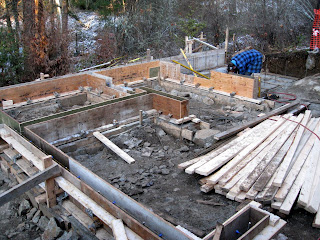Goats on the road, every afternoon - milking time.
The huge variety of goat cheeses and other dairy products was a gourmet's delight while travelling around Greece. Each village seems to have its own bacterial cultures producing distinctively different cheeses. It was the same with the many different fermented drinks. The fermented honey mead drink served warm on a cold rainy day was my favourite.
I was reminded of how standardized and limited the range of the bulk of commercially available food has become in North America.
Goat meat dishes were on the menu in most places and in the antique shops, I saw many goat hair textiles, often combined with wool. I suspect the goat has been a key item in the Greek economy for centuries.
The oldest textile in Greece has been found in the Church of Saint Sophia.
These ribbons were made between the 2nd half of the 14th century and up to the 1st half of the 16th century. Using gilded silver threads and metal beads they were woven on a tablet loom and embroidered in satin stitch.
Processing Silk
Local silk production went on during the Byzantine and post-Byzantine periods - 320AD to the 1800s.
Notice the elegant Kelpht guard watching over the work.
'Metaxi present and past'
A new textile installation. The title plays with the 2 meanings of metaxi - 'silk' and 'between'.
It refers to the "unknown princess" whose clothing and hair was found when her grave in the church of Saint Sophia was excavated.
Currently on display in the Museum of Mystras are her silk undergarment and her silk outer garment, remnants of her leather shoes and her hair still tied up and decorated in a variety of silk laces. These silk garments plus the history of silk production was the inspiration for this contemporary art installation. 'The 3D arrangement of yarns form linear patterns and reshapes the structure of the dress, reconstructing an immaterial and ethereal female figure.'
'By using yarn as a raw material, the weaving of a cultural bridge is achieved. A bridge that connects notionally the historical weaving position of women in the development of history and cultural meaning through a colourful path between past and present.'
The history of Greek textiles is long and interwoven with every aspect their culture.





























































